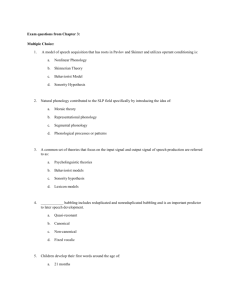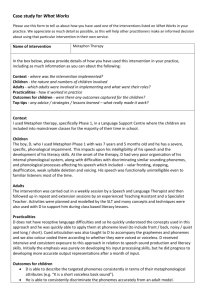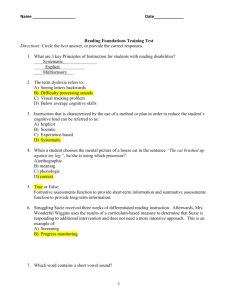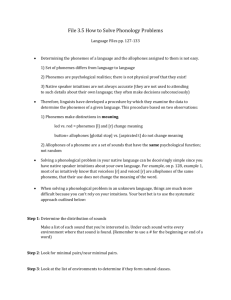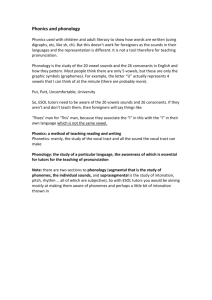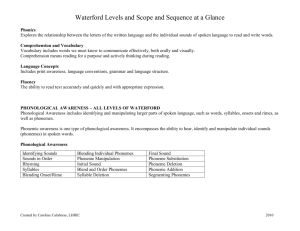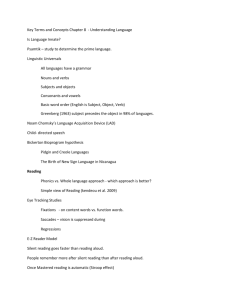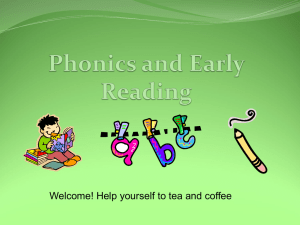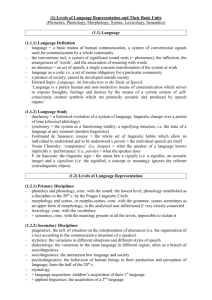phonology - Nechodimnaprednasky.sk
advertisement
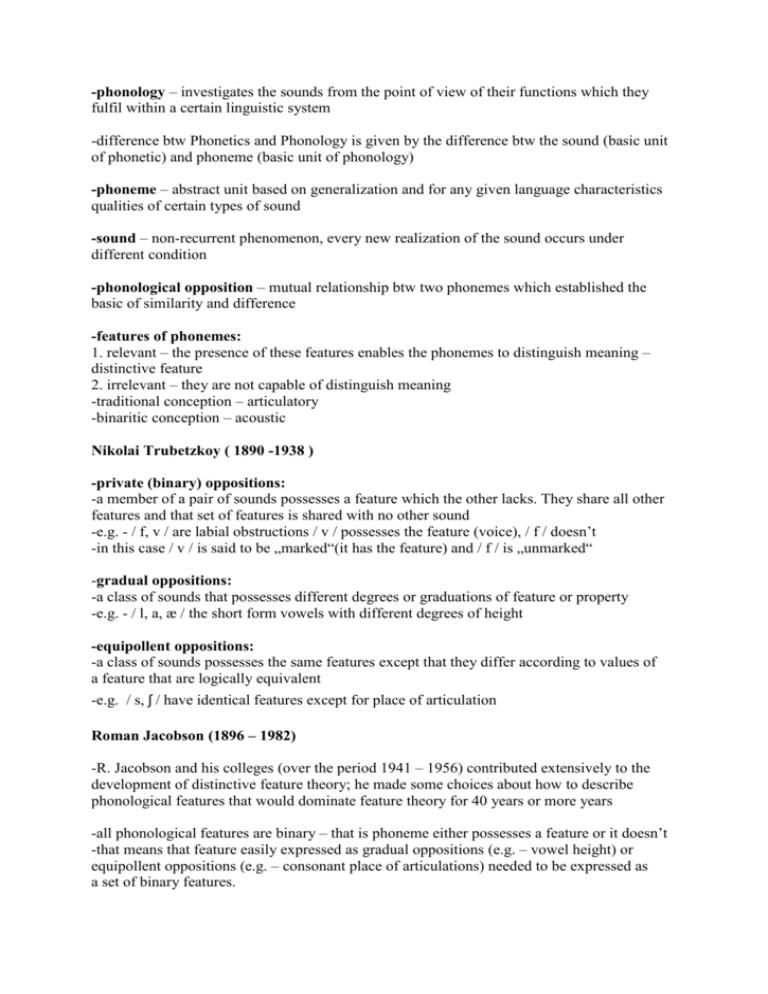
-phonology – investigates the sounds from the point of view of their functions which they fulfil within a certain linguistic system -difference btw Phonetics and Phonology is given by the difference btw the sound (basic unit of phonetic) and phoneme (basic unit of phonology) -phoneme – abstract unit based on generalization and for any given language characteristics qualities of certain types of sound -sound – non-recurrent phenomenon, every new realization of the sound occurs under different condition -phonological opposition – mutual relationship btw two phonemes which established the basic of similarity and difference -features of phonemes: 1. relevant – the presence of these features enables the phonemes to distinguish meaning – distinctive feature 2. irrelevant – they are not capable of distinguish meaning -traditional conception – articulatory -binaritic conception – acoustic Nikolai Trubetzkoy ( 1890 -1938 ) -private (binary) oppositions: -a member of a pair of sounds possesses a feature which the other lacks. They share all other features and that set of features is shared with no other sound -e.g. - / f, v / are labial obstructions / v / possesses the feature (voice), / f / doesn’t -in this case / v / is said to be „marked“(it has the feature) and / f / is „unmarked“ -gradual oppositions: -a class of sounds that possesses different degrees or graduations of feature or property -e.g. - / l, a, æ / the short form vowels with different degrees of height -equipollent oppositions: -a class of sounds possesses the same features except that they differ according to values of a feature that are logically equivalent -e.g. / s, ʃ / have identical features except for place of articulation Roman Jacobson (1896 – 1982) -R. Jacobson and his colleges (over the period 1941 – 1956) contributed extensively to the development of distinctive feature theory; he made some choices about how to describe phonological features that would dominate feature theory for 40 years or more years -all phonological features are binary – that is phoneme either possesses a feature or it doesn’t -that means that feature easily expressed as gradual oppositions (e.g. – vowel height) or equipollent oppositions (e.g. – consonant place of articulations) needed to be expressed as a set of binary features. -the reason for choosing binary features was that they made phonological rules easier to express e.g. X then [+B] else [-B] -Jacobson asserted that a small set of features can differentiate btw the phonemes of any language. 1. prosodic features – expressed within syllable 2. inherent features – expressed without any regard to the role they are played within syllable -tone, force, quantity: -the inherent features are subdivided into two features: 1. sonority features 2. tonality features
